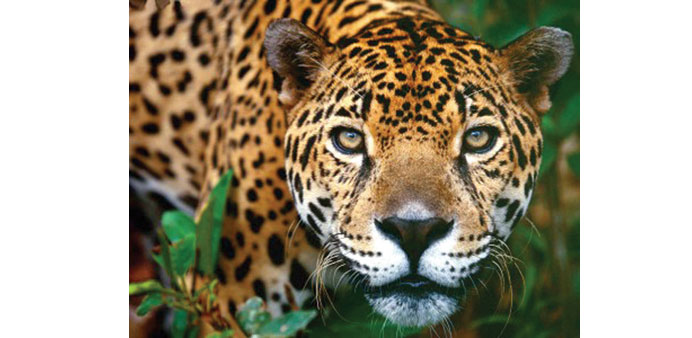DPA/Buenos Aires
Argentina has launched an ambitious jaguar breeding project aimed at establishing a self-sustaining population of the big spotted cats in a nature reserve in order to prevent their disappearance from the country.
Following four years of construction, the Jaguar Experimental Breeding Centre in the 10,000-hectare San Alonso reserve - part of the 1.3mn-hectare Ibera Natural Reserve in Corrientes Province in north-eastern Argentina - is now accepting residents.
They are to be moved in from zoos, said Emiliano Ezcurra, director of The Forest Bank (Banco de Bosques), a foundation dedicated to saving Argentina’s endangered forests and a major sponsor of the centre.
The first resident recently arrived - a female named Tobuna that has lived for years in captivity and is no longer able to survive in the wild. Her young could, though.
“This will be the first attempt to reintroduce captive-bred jaguars to the wild. And it’s also unusual for the zoos to be asked to donate animals,” said Ignacio Jimenez Perez, a biologist and the wildlife reintroduction programme co-ordinator at Ibera. The programme is run by Argentine authorities in collaboration with The Conservation Land Trust, a non-profit organisation based in San Francisco, California.
Tobuna still lacks a mate. The male jaguars in Argentine zoos are considered too old to breed or unfit for other reasons. A Uruguayan zoo has indicated that it may have a qualified suitor, however.
If everything goes smoothly, the first young jaguars will roam the reserve in about two years.
The breeding centre has four 1,200-square-metre enclosures for two pairs of jaguars that could give birth to their cubs in semi-natural conditions. Awaiting the cubs is an approximately 30-hectare area on a secluded island in the wetlands, where they can perfect their hunting skills before their release into the wider, wildlife-rich reserve.
“We hope the project will increase the national jaguar population by about 50%,” Jimenez said. Fewer than 200 jaguars now live in Argentina.
The word “jaguar” comes from “yaguarete” in Guarani, a language of an indigenous people from what is now north-eastern Argentina and Paraguay. A number of towns in Corrientes Province still use the name “yaguarete,” and the animal plays a prominent role in Argentine culture.
Weighing up to 130kgs, jaguars are the third-largest big cats after tigers and lions, and the largest in the Americas. Their original habitat - jungles, forests, grasslands and swamps stretching from northern to central Argentina, and even in the vicinity of Buenos Aires - has shrunk by 95% in recent decades to three separate areas, said Jimenez, who pointed out that in the 1980s, in particular, many jaguars fell victim to rainforest logging and hunting.
Today, Argentines hardly know they exist, he remarked.
Foundations, companies and zoos have been working with the government of Corrientes Province since 2005 to settle endangered species in Ibera Nature Reserve. Giant anteaters are among those that have been successfully reintroduced to the wild there. Tapirs, South America’s largest mammal, are soon to follow.

